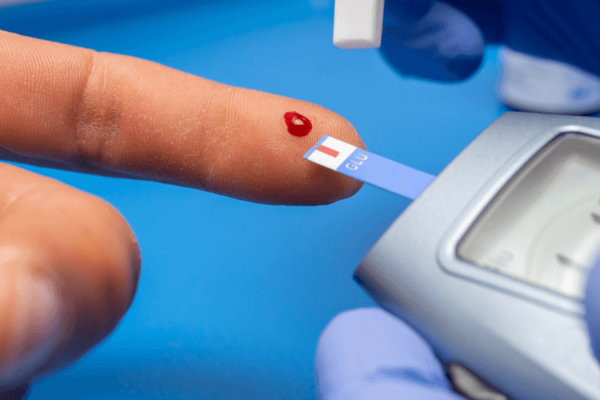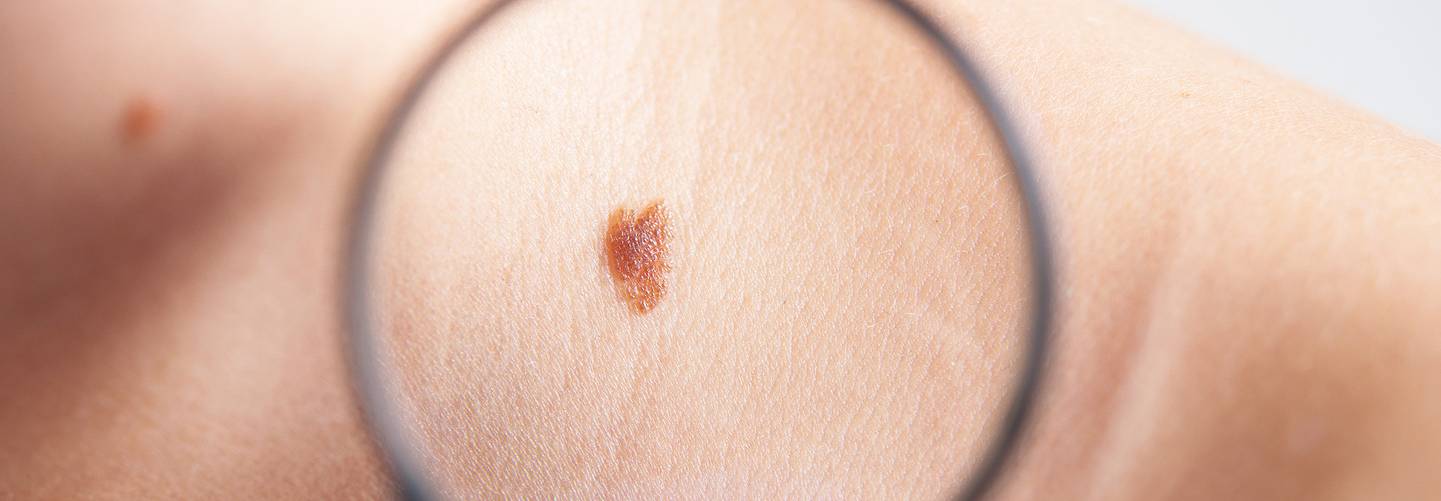
22 Feb Looking out for skin cancer
Looking out for skin cancer
By Island Hospital | Feb 22, 2021 5:17:39 PM
Alongside cancers of the lung, breast, and colon; skin cancer is one of the most common cancers affecting the human population. While it often develops on parts of the skin exposed to the sun, skin cancer can also occur on parts of your body that are normally covered from sunlight.
Like most forms of cancer, the survival rate for people with skin cancer is quite high when the condition is detected and treated early. Understanding the basics of skin cancer can help a person better identify a potential case of skin cancer and seek treatment early, as some skin conditions can be mistaken for skin cancer.
Skin cancer usually forms on areas of the skin that are exposed to the sun, which are the arms, legs, face and scalp. Parts of the face such as the lips, ears and neck are also areas that can be affected.
Even so, skin cancer does not form exclusively on sun-exposed skin. Areas that are often covered and not exposed to sunlight — such as the genitals or areas underneath your fingernails/toenails.
A common misconception is that people of darker skin tones or complexions do not get skin cancer because they have more melanin in their skin. While melanin protects the skin from UV rays, this is not true. People of darker skin can still get skin cancer.
In fact, research has shown, that skin cancer is often detected at a later stage in people with darker skin colour. This is because people of color tend to develop skin cancer in areas that are uncommon, making detectionslightly more difficult for some individuals. Due to the misconception, people of colour may also choose not to check for skin cancer until a later stage.
There are three main types of skin cancers, which are:
- Basal cell carcinoma (BCC)
- Squamous cell carcinoma (SCC)
- Melanoma
Most skin cancer cases are non-melanoma cases, consisting of either basal cell carcinoma (BCC) or squamous cell carcinoma (SCC) cases. These cancers are malignant but are unlikely to spread when treated early. Basal cell carcinoma and squamous cell carcinoma usually occur in sun-exposed areas of the skin.
The more uncommon skin cancer is melanoma, which also happens to be the most dangerous one. Melanoma is highly aggressive and is known to cause the mostnumber of deaths by skin cancer.
Melanoma can develop anywhere in a person’s body, where it can either develop on normal skin or in an existing mole. In men, melanoma often appears in the face or the trunk. In women, it often develops in the lower region or the legs.
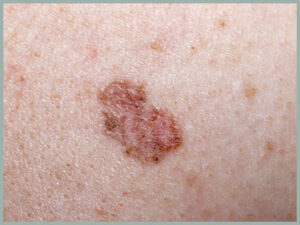
Basal cell carcinoma
- A pearly or waxy bump
- A flat, flesh-coloured or brown lesion that looks like a scar
- A bleeding or scabbing sore that heals and returns
- An open sore that bleeds, oozes or hardens into a crust and remains open for weeks
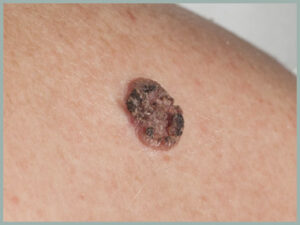
Squamous cell carcinoma
- A firm, red nodule
- A flat red patch with a scaly, crusted surface that may bleed easily
- An open sore that persists for weeks
- An elevated growth with a rough surface and central depression (sinks in at the middle)
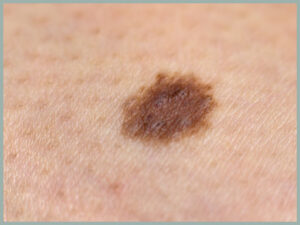
Melanoma
- A large brown spot with darker speckles
- A mole that changes in colour, size or feel
- A mole that bleeds
- A small lesion with an irregular border and portions that appear red, pink, white or black
- A painful lesion that itches or burns
- Dark lesions on your palms, soles, fingertips or toes
- Dark lesions on the mucous membranes lining your mouth, nose, vagina or anus
Signs and symptoms of less common skin cancers
Apart from the three major types of skin cancer, there are other forms of skin cancer such as merkel cell carcinoma or sebaceous gland carcinoma.
Merkel cell carcinoma causes shiny nodules to appear on the skin or hair follicles. This cancer is often found on the head, neck or trunk.
Sebaceous gland carcinoma develops in the oil glands of the skin — which can create hard, painless nodules in the affected areas. It forms mostly around the eyelid and is often mistaken for eyelid problems. It is an uncommon cancer but can be aggressive and early treatment is advised.
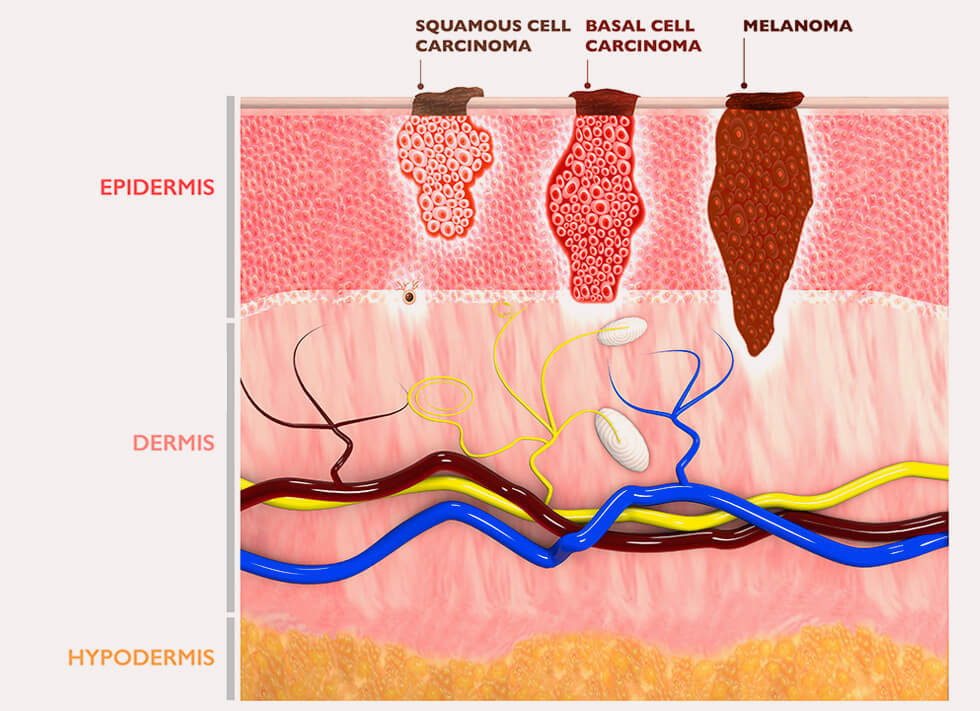
Cancer occurs when an error or mutation occurs in cells. Instead of growing at a controlled rate, the cells multiply rapidly and form a mass of cancer cells. When this occurs in the cells of our skin, then skin cancer will form.
Skin cancer begins in the top layer of our skin, known as the epidermis. Within the epidermis, there are three types of cells.
- Squamous cells, which are right under the outer surface of the epidermis. This is the inner lining of the skin.
- Basal cells are beneath the squamous cells, these cells produce new skin cells when needed.
- Melanocytes are located in the lower part of our epidermis. These cells produce melanin, which is the pigment that gives our skin colour. The more melanin our body creates, the darker or more tanned we will become.
*When we are under the sun, the melanocytes will create more melanin to protect the deeper layers of our skin; which explains why our skin tends to turn darker after prolonged exposure to sunlight.
The damage our skin suffers is often a result of ultraviolet (UV) radiation, found in sunlight or the lights used in tanning beds. However, UV radiation is not the sole cause of skin cancer; as it is possible to develop skin cancer in parts of the skin that aren’t exposed to sunlight.
As such, there are other factors that may also contribute to your risk of skin cancer. For some people, staying clear of the sun is not enough to be safe from skin cancer.
Factors that may increase your risk of skin cancer are:
Fair skin – While it is true that anyone can get skin cancer regardless of skin colour, individuals with fair skin have less melanin (pigment) in their skin which provides less protection from UV radiation.
Sunburns — Individuals who sunburn easily are also more likely to develop skin cancer than individuals with darker skin. The more sunburns a person has had, the greater their risk of skin cancer.
Sun exposure — Individuals exposed to the sun for long periods of time without adequate protection from sunscreen or clothing are also at risk of skin cancer. This is true for individuals who get tans or are exposed to tanning lamps/beds; as a tan is the skin’s response to excessive UV radiation.
Moles — People with many moles or abnormal moles are also at an increased risk of skin cancer, because irregular moles are more likely to develop into cancerous lesions. A person with a history of abnormal moles will need to be vigilant and watch for any changes in their moles or skin.
A family history of skin cancer — If your parents or siblings have had skin cancer, then you may be at an increased risk as well.
A weakened immune system —People with weakened immune systems caused by diseases such as HIV/AIDS or by immunosuppressant drugs are more likely to develop skin cancer.
Radiation — If you have received radiation as a form of treatment, then you may also have an increased risk of skin cancer.
One of the ways a person can reduce their risk of skin cancer is by limiting or avoiding exposure to ultraviolet (UV) radiation. Some methods that can help you do so are:
- Avoid the sun during the middle of the day when the sun is at its brightest, which is often 12PM to 3PM in the afternoon.For individuals who have a history of sunburns or often find themselves outside during these hours, consider using sunscreen or clothing that can help protect your skin from UV rays.
- This allows you to avoid sunburns or tans that cause skin damage, both of which can increase your risk of skin cancer. This is especially true for individuals who enjoy swimming or who are on vacation.
*Your skin generates vitamin D when exposed to the sun, so you should not avoid sunlight completely. A healthy balance is required in all things, which includes exposure to sunlight.
- Wear protective clothing such as tight clothes that cover your arms and legs. Sunscreens may offer protection from UV rays, but it is not complete as compared to covering your skin with clothing. For individuals that are looking to protect their scalp or face, broad hats are better and offer more complete protection than regular baseball caps or visors.
- Avoid tanning beds as the UV rays emitted by the lamps can also damage skin cells and increase your risk of skin cancer.The lights used in tanning beds emit UV rays and can increase your risk of skin cancer.
- Certain medications may increase a person’s sensitivity to sunlight. If this concerns you, check with your doctor or pharmacist if any of your medications will increase your sensitivity to sunlight; and consider taking extra precautions to stay out of the sun.
Apart from limiting your exposure to UV radiation, it is also a good habit to check your skin regularly for any changes or new growths; especially in existing moles, bumps or birthmarks. Some of the commonly affected areas like your face, neck, scalp and eyes are worth checking from time to time. Uncommon areas such as the legs, feet and genital areas should also be checked every once in a while.
Early detection of skin cancer gives you the greatest chance for successful skin cancer treatment. If you suspect any abnormal growth, lumps or changes in your skin; do not hesitate to consult a dermatologist.
Treatment options for skin cancer and pre-cancerous skin lesions will vary depending on the type of lesion. Small skin cancers may simply require a skin biopsy to remove the entire growth, while other types of skin cancer may require other options such as:
Freezing (cryosurgery) — Early skin cancers and small lesions can be frozen using liquid nitrogen in a process known as cryosurgery. This kills the tissue and the body will discard the dead cells when it thaws.
Excision– Your doctor will cut out the cancerous skin tissue along with some of the healthy skin that surrounds it. This method is done to not only remove the harmful cancer cells, but also to reduce the likelihood of cancer recurrence by removing a margin of the cells around the cancer cells.
Mohs surgery – This procedure is used to treat larger or difficult skin cancer cases, and may also be used to treat recurring skin cancer cases. Mohs surgery is also used to treat skin cancer on parts where skin needs to be conserved, such as a person’s nose or lips.
For this procedure, the doctor will remove the skin affected by cancer in layers with the use of a microscope. Each layer of skin is removed one by one until all the abnormal / cancerous cells are removed.
Curettage with electrosurgery or cryotherapy – A combination of two procedures, the first is curettage; where the doctor will use a spoon-shaped blade to remove the skin cells affected by cancer.
Afterwards, the remaining cells will be:
- Burned using an electric needle (electrosurgery)
- Frozen with liquid nitrogen and then removed (cryotherapy)
Apart from the aforementioned procedures, other treatment methods may also be employed to treat skin cancer depending on the stage and severity.
Radiation therapy / radiotherapy – High-powered energy beams such as X-rays are used to kill the cancer cells. If the cancer cannot be completely removed by surgery, radiotherapy might be used.
Chemotherapy – In some cases, chemotherapy drugs are used to kill cancer cells in the person’s body. For skin cancers that are confined to the top layer of the skin, some anti-cancer agents or creams may be used instead of drugs. Chemotherapy is often used to treat cancers that have spread to other parts of the body.
Photodynamic therapy – By using drugs that makes cancer cells more sensitive to light, skin cancer is treated using laser light to destroy the cancer cells.




